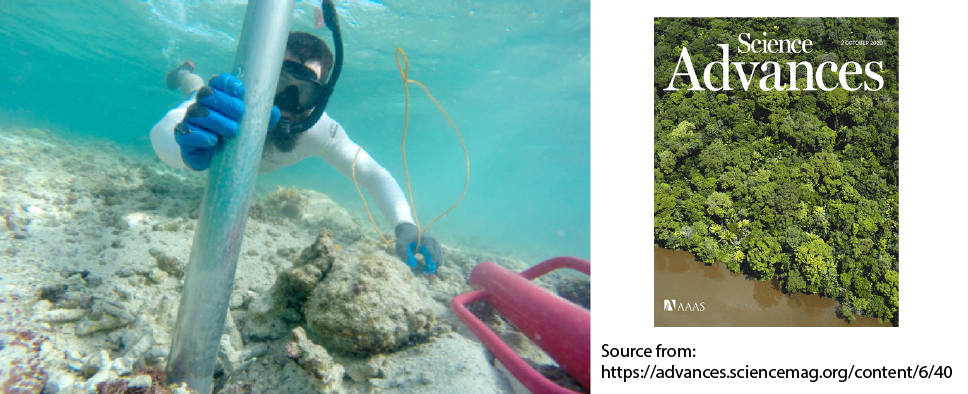Involved Members: Prof. Jianwen QIU, Dr. Moriaki YASUHARA
Our members of SKLMP, Dr. Moriaki Yasuhara (School of Biological Sciences and Swire Institute of Marine Science (SWIMS) of the University of Hong Kong) and Prof. Jianwen Qiu (Department of Biology, Hong Kong Baptist University) jointly published an important co-authored paper in Science Advances to report on the historical trend of corals in the marine environment of the Greater Bay Area (GBA) of China, including Hong Kong. This work was led by a PhD candidate and National Geographic Explorer, Mr Jonathan Cybulski and his supervisor Dr. David Baker from SWIMS. The research team, for the first time, investigated the historical presence of coral communities in GBA, revealing a catastrophic range collapse and loss of diversity that occurred in the last several decades. They examined fossil corals collected from over 11 sites around Hong Kong, and created the first palaeoecological baseline for coral communities in GBA. They uncovered what coral genera were present in the past well before major human impacts, and these coral genera include: Acropora, Montipora, Turbinaria, Psammacora, Pavona, Hydnophora, Porites, Platygyra, Goniopora and Faviids. Most importantly, this historical research showed that the historical collapses of the corals was likely due to water pollution and habitat loss associated with coastal development. Their results imply that poor water quality driven by increased development and lack of proper treatment is presently the greatest threat to the survival of corals in GBA.
Reference:
Cybulski, J.D., Husa, S.M., Duprey, N.N., Mamo, B.L., Tsang, T.P.N., Yasuhara, M., Xie, J.Y., Qiu, J.W., Yokoyama, Y. and Baker, D.M. 2020. Coral reef diversity losses in China’s Greater Bay Area were driven by regional stressors. Science Advances, 6(40), eabb1046.
